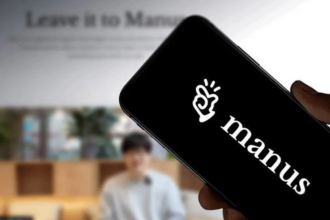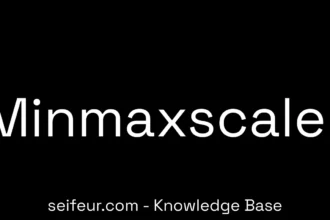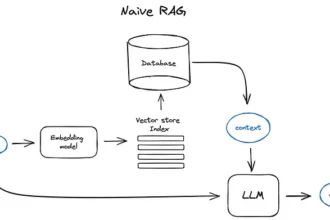Table of Contents
ToggleMCP explained
Ever feel like Large Language Models (LLMs) and external tools are speaking different languages? It’s a bit like trying to get your dog to understand astrophysics, right?
Well, fret no more! Enter the Model Context Protocol (MCP). Think of MCP as a universal translator for the AI world.
It’s the cool new protocol designed to make LLMs play nice with all sorts of external data sources and tools.
Imagine a world where your AI assistant effortlessly connects to your Google Drive, Slack, and even that quirky 3D modeling software you love.
That’s the promise of MCP and it is closer than you think!
What in the AI World is MCP Anyway?
In simple terms, MCP, or Model Context Protocol, is a set of rules.
These rules standardize how those brainy LLMs link up with the outside world.
Think of it as a handshake agreement for AI.
Instead of every LLM and tool needing a custom-built bridge, MCP provides a common language. This brainwave comes to us courtesy of Anthropic, who unveiled MCP as an open-source gem in November 2024.
Yes, just when you thought AI couldn’t get any more interesting, they drop this!
MCP is all about smoothing the way for LLM applications to team up with external data and tools. Think of it as the ultimate team-building exercise for your AI.
Why Should You Care About MCP? The Perks!
Okay, so it’s a protocol, big deal, you might say.
But hold your horses! MCP brings some seriously cool advantages to the table.
Let’s dive into why MCP is not just another tech buzzword, but a real game-changer.
Say Goodbye to Integration Nightmares
Remember the integration headache where every new language model (M) needed custom connections for every tool (N)?
That’s the dreaded M×N problem.
It’s like needing a different adapter for every single gadget you own, utterly chaotic!
MCP, inspired by the Language Server Protocol (LSP), swoops in to save the day.
By getting both models and tools to speak the same MCP language, it slashes integration complexity down to a manageable M+N.
Suddenly, things are less like untangling headphones and more like snapping LEGO bricks together.
No More Custom Connector Chaos
Custom connectors? Sounds expensive and time-consuming, doesn’t it?
MCP kicks those custom connectors to the curb.
By setting up a standard protocol for language models to chat with external tools and data, MCP fosters a much stronger and friendlier AI ecosystem.
It’s like finally agreeing on standard plug sockets worldwide – pure bliss!
Building AI Systems That Can Actually Scale
For AI apps juggling context across different information sources, MCP is a boon.
Standardization is the key here.
It lets us move towards building AI systems that aren’t just smart, but also seriously robust and scalable.
Imagine building skyscrapers instead of wobbly towers of blocks, that’s the scalability MCP unlocks.
Innovation on Steroids – Thanks to Community!
MCP embraces the power of community.
Think of it as “compounding innovation.”
Or even better, “3D chess” for tech development.
Each person builds on top of what others have done.
The network effect is huge and the whole pie just keeps getting bigger for everyone involved.
Open-source magic at its finest!
Decoding MCP: Core Components Unveiled
Alright, let’s peek under the hood and see what makes MCP tick.
MCP has a few key players in its ecosystem.
Let’s break down the core components without getting too techy.
MCP Host: Your AI’s Friendly Face
The MCP Host is the user-facing part of the AI system.
Think of it as the Claude app, or maybe an IDE plugin – basically, anything you directly interact with.
The Host is the social butterfly that can connect to many MCP Servers at once.
It’s the main point of contact for you and the AI world.
MCP Client: The Secure Go-Between
Sitting within the Host application is the MCP Client.
This clever bit acts as an intermediary.
It manages secure connections between the Host and those Servers.
For extra security and isolation, there’s one Client for each Server.
Think of the Client as a trustworthy bodyguard, ensuring smooth and safe interactions.
MCP Server: The Powerhouse of Capabilities
The MCP Server is an external program, packed with specific talents.
This could be anything from tools to data access or even domain-specific prompts.
Servers are the workhorses, connecting to various data sources like Google Drive, Slack, GitHub, databases, and even web browsers.
They bring the muscle and specialized skills to the MCP party.
MCP’s Cool Moves: Key Features You Should Know
MCP isn’t just about components; it’s got some neat features that make it truly special.
Let’s explore a couple of standouts.
Roots: Setting Boundaries Like a Pro
Roots are all about defining authorized zones.
They specify locations within the host’s file system or environment where a server is allowed to play.
Roots set clear boundaries for server operations.
They also tell servers about relevant resources and where to find them.
Think of Roots as drawing lines in the sand, ensuring everyone knows where they can and can’t go.
Sampling: The Underdog Feature with Surprising Power
Sampling is where MCP flips the script.
Usually, clients ask servers for things.
But Sampling lets MCP servers request LLM completions from the client.
Yes, you read that right, servers asking clients!
This gives clients total control over model choice, hosting, privacy, and even managing costs.
Servers can request specific things like model preferences, system prompts, temperature settings and token limits.
Meanwhile, clients get to be the gatekeepers, declining any dodgy requests or limiting resource usage.
This is super handy when clients are dealing with unknown servers but still need smart capabilities.
Sampling is like having a reverse gear in your AI interaction toolkit – unexpectedly useful!
MCP Inspiration: A Nod to LSP
We mentioned it earlier, but it’s worth reiterating.
MCP tips its hat to the Language Server Protocol (LSP).
LSP solved similar integration puzzles in the coding world.
MCP borrows that wisdom to tackle the MxN integration problem in the LLM universe.
It’s like taking a successful blueprint and adapting it for a new, exciting project.
MCP’s Rise: Adoption and Community Growth
MCP isn’t just sitting on the shelf; it’s gaining serious traction.
The server side of things is booming.
We’re seeing thousands of community-built, open-source servers popping up.
Plus, big companies are jumping on board with official integrations.
The open-source community is also playing a huge role.
Contributors are actively enhancing the core protocol and infrastructure.
It’s a vibrant ecosystem, buzzing with activity and growth.
MCP in Action: Real-World Examples
Enough theory, let’s see MCP in the wild!
One cool example is Blender-MCP.
This integration lets Claude directly control Blender.
Imagine using prompts to assist with 3D modeling, scene creation, and manipulation – mind-blowing!
It’s like having a super-smart AI co-pilot for your creative projects.
MCP: Is it the Future of AI Integration?
Model Context Protocol is more than just a technical specification.
It’s a step towards a more connected, scalable, and innovative AI future.
By tackling integration complexities and fostering community collaboration, MCP is paving the way for smoother, more powerful AI applications.
So, is MCP the secret sauce for AI harmony?
It certainly looks like it could be a major ingredient!
Keep an eye on MCP, it’s shaping up to be a key player in the evolving AI landscape.
And who knows, maybe soon your dog will finally understand astrophysics, with a little MCP magic!





